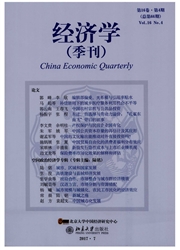

 中文摘要:
中文摘要:
中国改革开放三十年的高速经济增长是建立在适宜制度的基础上的。其中,经济分权和政治集权是适宜于大国治理的政治结构,而基于关系的社会结构则适宜于市场范围狭小的经济发展的早期阶段。但是,中国的政治和社会治理结构也为当代中国发展的内外“双重失衡”埋下了隐患。在内部,人们拥有的政治、社会和经济资源不平等,对城乡间、地区间和人际间的收入差距和公共服务不均等起到了重要的影响;而收入不均等对于内需的制约又使得中国经济增长过度依赖投资。在外部,国内的劳动弱势局面成为中国出口依赖型经济增长方式的基本背景。为了可持续发展,中国需要不断调整其的政治和社会结构,实施适宜于更高发展阶段的制度。中国成功发展的经验是:发展的共识+必要的政府执行力+政治的竞争+有效的激励+制度的试验。这些经验可以被其他国家有条件地借鉴。
 英文摘要:
英文摘要:
In this paper, the author incorporates appropriate institution, economic growth, and balanced development into a development triangle to understand the path of China. China's high growth in the past 30 years has been based on appropriate institution. Political centralization plus economic decentralization is an appropriate governance structure for a big country, and relation-based social structure is appropriate for early-stage development. However, this development model also leads to inequality and both internal and external economic imbalances. To sustain a high growth, China has to continuously adjust her political and social structure. China has gone along a development path that is composed of development consensus, policy enforceability, political competition, efficient incentive and institutional experiment.
 同期刊论文项目
同期刊论文项目
 同项目期刊论文
同项目期刊论文
 期刊信息
期刊信息
